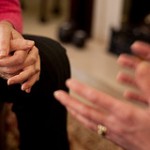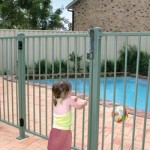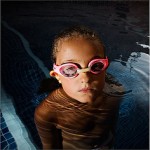A Careflight Emergeny Physician describes the medical professionals side of dealing with drownings
Dr Steve Walkers account printed recently in the Daily Telegraph paints a chilling picture of the medical professionals role in dealing with toddler drowning.
I encourage you to read it. Consider the number of people he describes as being involved, and that the professionals involved see these events all too frequently.
The impact of drowning and near drowning extends widely.
Also take note of Dr Walkers comments regarding “it won’t happen to me thinking”.
Thank you Dr Walker for your public account.
The Daily Telegraph article is re-produced in full below. After you have read it, PLEASE subscribe to our newsletter and join us in the fight to stop this happening to too many families around the country every year.
A river of tears for children lost
Dr Steve Walker – Daily Telegraph
IT WAS another hot afternoon in Sydney. The sort of weather that we have come to associate with children drowning. They don’t understand that pools are dangerous – only that they are fun and offer respite from the heat.
We have been to so many drowned children the last few summers. A few of them survived, but a lot did not. They are the jobs we hate most.
Less than an hour to go until the end of the shift and it is starting to look like that will be it for the day. A case comes up on the triple-0 screens: “Toddler found unconscious in pool. Not breathing. Frothing from mouth. Father doing CPR.”
The location is only a few kilometres away. As the four of us (pilot, air crewman, paramedic and myself) walk out to the helicopter, we are all thinking the same things. Not another one!
We are airborne in a couple of minutes, and the location is just a few minutes away. A few minutes to think. How long was the child missing before he was found? Don’t know. How well can the father do CPR? Don’t know. But these factors will largely determine whether the child will live or die.
We run up to the ambulances and then see people waving and calling out to us. Down the side of a house and into the backyard. It is always the same. A small child lying motionless in a puddle of water beside the pool. Sometimes a little girl, but more often a little boy. Not moving. Not breathing. Frantic parents crying.
The paramedics are now doing the CPR and are putting an oxygen mask on the boy. I observe white froth at the mouth, which means some water has gone down into the lungs. I kneel beside him. He is pale – almost white. And cold. Very cold.
We quickly dry the child, attach a heart monitor and stop CPR so we can see if the heart is beating. Nothing. Just a flat line.
Continue CPR. One of the paramedics carefully puts a small plastic tube down into the child’s lungs so that we can administer oxygen more effectively. Not easy to do with all that froth. Nor with the distraught parents looking on. Not easy at all.
We need to get a needle into a vein so we can give some adrenaline to try to restart the heart. Another paramedic uses a cordless drill to insert a thick needle into a bone in the child’s leg. From here drugs will quickly reach the heart. It looks brutal but the child is beyond feeling anything.
A dose of adrenaline and we wait for the CPR to pump it round to the heart. I notice more paramedics and police arriving. The police look young and are visibly shocked – perhaps their first drowning?
Some children are standing around. They look frightened but look too young to fully understand what is going on.
The father keeps asking what is happening and is he going to be OK? How do you say “I don’t think so”?
Still a flat line on the monitor. A second dose of adrenaline and drug to try to stimulate the heart. More CPR. And we wait. I can hear the parents screaming and one of them seems to be blaming the other. I know that the guilt and blame will endure for days, months and years to come.
Still no response. A third dose of drugs and more CPR. I have never met most of the paramedics I am working with, but we are working well as a team. Everyone is operating well outside their comfort zone.
We stop CPR again. Still nothing on the monitor. How long now? Ten minutes since we arrived. Plus five minutes for us to get here.Plus however long he was in the water before he was found.
What now? We have tried everything and nothing has worked. We talk quietly among ourselves. At some point hope has to give way to futility and we are now very close to that point. How do you tell the parents that you are sorry but their boy is dead?
A fourth (and final) dose of drugs and more CPR. We wait and watch. Something shows on the monitor as the heart finally starts. Slow and erratic – please don’t stop.
One of the paramedics can feel a strong pulse and other monitors tell us blood and oxygen are now flowing around his little body. But it has taken a long time for his heart to start – was it too long? Apart from a pulse, the boy shows no sign of life. We wouldn’t expect anything else yet. It is far too early for him to wake up. And he possibly never will.
We transfer the boy on to a stretcher and out to the waiting ambulance. Over short distances the ambulance is faster than the helicopter. I dial the “Batphone” [an emergency phone which is always answered immediately] at The Children’s Hospital at Westmead so they can prepare for us. Even through the phone I sense the thoughts of the nurse – not another drowning!
A 10-minute ride in the ambulance. The heart keeps beating strongly.Not much else to do now. I contemplate a life lost and a family in grief. Why does this keep happening over and over again?
We arrive at the hospital. Perhaps 20 staff waiting in the resuscitation room. We hand over care to them and then start packing away our gear. I notice the parents in a corner. The mother is sitting crying while the father paces around in anguish and looks like he will collapse. They face a long wait.
They are told things are very serious, but there is a chance. There are no tests that can predict the future. Only time will tell. It will probably be several days before they know whether he will live or die. And if he lives, longer still until they know whether life will be good. Will their boy still be able to walk and talk and play? One hell of a wait.
After we have finished, all the paramedics involved join us at the helicopter base behind the hospital. There is a mix of older, experienced paramedics and younger officers for whom this was their first drowning. Sadly it will not be their last. After such a case it helps if staff have an opportunity to wind down and discuss what they saw, did and felt.
They need to understand this experience will live with them for a long while to come and that it is quite normal to be affected by it.
At home that night I lay awake, replaying what happened. I hope the boy will make a miraculous recovery. I think of the parents keeping a bedside vigil throughout the days and nights ahead.
I visited the child in hospital several days later. He has lived but has brain damage.
When people hear of a child drowning, often their first thought is to blame the parents and to think that they must be irresponsible for this to have happened. Perhaps this belief is a mechanism that helps reassure parents that such a fate will never befall them. But this isn’t usually the case.
I met the parents several times over the next few weeks and they seemed like good, responsible people. Dad had worked that day and had come home to look after the children so Mum could get a few hours sleep before she worked a night shift.
A normal family with both parents working and a few kids – like millions of other families around the country.
It can be difficult to supervise a family of kids – they are so quick and you can’t be everywhere. This tragedy arose from a momentary oversight, not because of bad parents. It can happen so quickly.
There are always a lot of victims when a child drowns. Someone will feel responsible for years to come. Marriages will often end in divorce due to the intense guilt and blame. Siblings will miss their little brother or sister, they will struggle to understand what happened and they will wonder why family life has forever changed.
And to anyone who thinks this can’t happen to them, please understand that the parents of every drowned child once believed this too.
Dr Walker is a CareFlight emergency physician




Leave a Reply